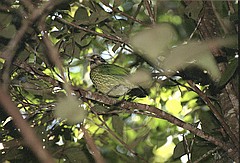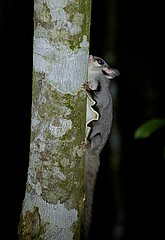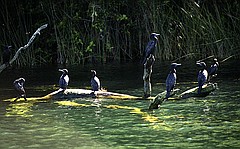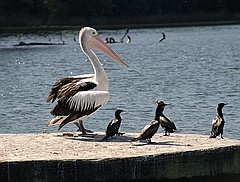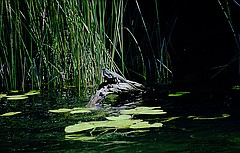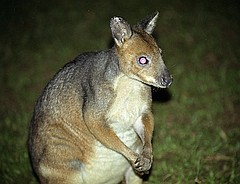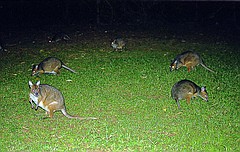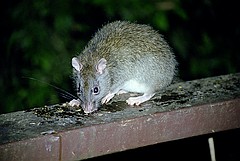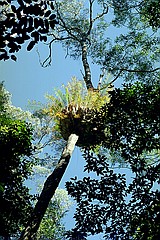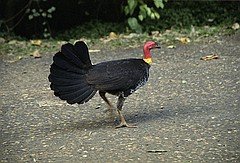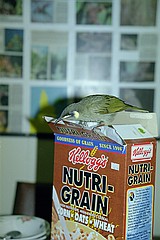Crater Lakes
It was evening as we drove up to the lodge, surrounded by tall rainforest, and as we climbed the stairs to the veranda, a cat yowled at us from the nearest tree. Closer examination revealed a bird sitting on the branch regarding us with some disfavour.
Aha! A spotted catbird! If only bird identification in Australia was always that easy.
Later that evening, John Chambers came around with some magic mixture which he smeared on the veranda rail. We sat in the dark, staring into the gloom of the trees outside the house. Suddenly, a movement high up in the tree became a fast glide down onto the veranda rail, and changed into a big-eyed, bushy-tailed, tiny little bundle of cuteness - a sugar glider, feasting on the treacly mixture.
That first evening, we sat in the dark living room, hardly daring to breathe in case we scared the delightful little creature away. Later on, we found that we could not only lounge around on the veranda waiting for them to arrive, but, so avid were they for the sugary mixture, they put up with having their back stroked while they were feeding!
The following day, we went on a boat trip around Lake Barrine, observing the plentiful wildlife - cormorants and pelicans, lizards and snakes basking on rocks around the shores, and a cassowary to greet us at the bus stop.
That evening, John spread food on the lawn outside one of the lodges, and we watched as a troop of nocturnal kangaroos called pademelons emerged from the darkness to take their fill.
After dusk, we often saw pademelons in the rain forest around the lodges, but it was a privilege to be able to watch them closely as they fed unafraid, just a few yards away from us.
Another marsupial that haunted our veranda was euronymus, otherwise known as a white-tailed rat. Despite having worldclass whiskers, they seemed to realise that their appearance and the name they had been given resulted in a very low cuteness factor, and they sidled away when approached too closely.
The rain forest around us contained the usual tropical profusion of tree species, many of which had parasitic ferns growing like a crown up in the canopy, and always there were brush turkeys scraping in the undergrowth amongst the leaves which were everywhere. Later in the year, they would gather the leaves to form the huge nests in which they would incubate their eggs, leaving the forest floor clear.
As we sat having breakfast, a honey-eater arrived on the veranda. After eyeing the fare on the table, he came in and flew around the room as if he was on a tour of inspection. He then settled down on the table to eat his fill, and then flew off, disappearing as quickly as he had appeared.
This brief description does not do justice to the wildlife around this fascinating area. In order to find out more, you cannot do better than go to John Chambers' website, which is an excellent information resource on the area and its wildlife.
